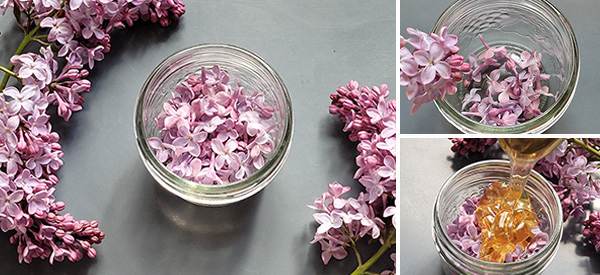
Lilac Flower Infused Honey
A lilac in full bloom is a breathtaking sight. They are on display over a long season, blooming massively in mid-late spring and again mid-summer through fall.
These long-lived performers grace us with their gorgeous scent and abundant blooms year after year, requiring very little in return! But who knew these lovely giants were also edible! I think of the hours I spent braiding delicate lilac flower necklaces as a kid, if only I had known, you can eat them! This article is going to go into ways to use lilacs, including their healthful benefits. We’ll also share an easy and delicious recipe for celebrating this delicious flower.
Lilacs are an old-fashioned favorite for good reason. Plants stand the test of time with lifespans up to 200 years! They thrive in alkaline soils. If you have abundant rhododendrons and azaleas in your midst, these thrive in acidic soil conditions.
There are many varieties of lilacs (Syringa sp.), many of which are beautiful. One of the most fragrant and easy to grow is the lovely and long-lived common lilac (Syringa vulgaris). This is the lilac we are discussing today. It is a deciduous shrub that may reach 20 feet in height. It is hardy in zones 3 to 7.
Benefits of Lilacs
Not only do lilacs smell delicious, but they also have some edible and medicinal benefits as well. The flowers may be used in tea, to add flavor to baked dishes, dried to decorate said baked dishes, infused in oil, or, as in the recipe below, honey. Fragrance and perfumery are an obvious use for lilacs. The lovely floral aroma is uplifting and may ease anxiety. Similarly, lilac is used in aromatherapy and in skincare products. Lilac oil is said to be astringent, reduce inflammation while reducing fine lines and signs of aging.
The Joy of Harvesting Lilac Flowers
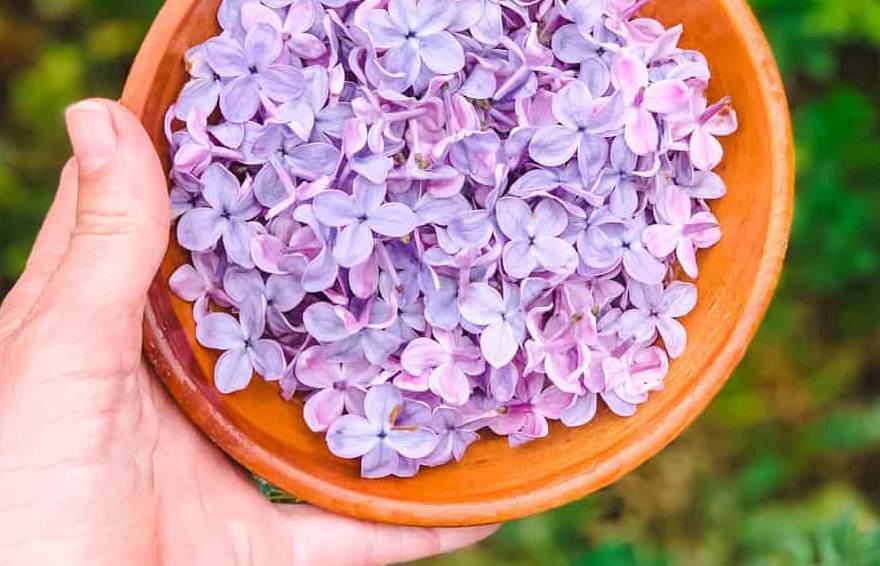 Lilacs have a long bloom season which begins early to mid-spring. By the time summer’s heat is knocking at the door, most of the lilac blooms have faded. These faded blooms persist to become brown hard seed capsules.
Lilacs have a long bloom season which begins early to mid-spring. By the time summer’s heat is knocking at the door, most of the lilac blooms have faded. These faded blooms persist to become brown hard seed capsules.
For harvesting, choose lilac flowers that have just recently opened. The best flowers to harvest are bunches that still have some closed flowers at the tips. There may be lilac products available for sale such as lilac essential oil. Fresh lilac flowers do not last long. Unless they are grown in your area and you catch them at the right time, lilac flowers may be out of reach!
Lilac Flower Infused Honey
Ingredients
Freshly picked lilac flowers. You might also dry lilac flowers to infuse in honey at a later time.
Unpasteurized, raw honey. If you have a local apiary to source honey, this is often a fun thing to do. It may also help to support a small local industry in your area. Honey producers are sometimes found at farmer’s markets or other events created to support local growers. Otherwise, use the best honey you have available to you.
Method:
Step 1: Identify and source lilacs growing in your area. Most common is the common variety of lilac. As many types of lilac are grown from common lilac rootstock you can’t go wrong. Also, all varieties of lilac are nontoxic. Just some may be more fragrant than others.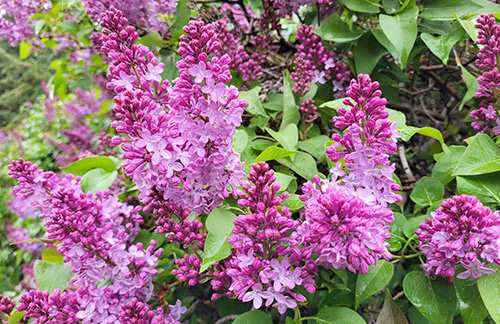
Step 2: The best time to harvest lilac flowers is early in the morning before the bees are at them. The lilac branches produce blooms at their tips. The blooms are arranged in pyramidal-shaped bunches which open from the bottom to the top. With garden pruners, cut off the desired amount of blossoms.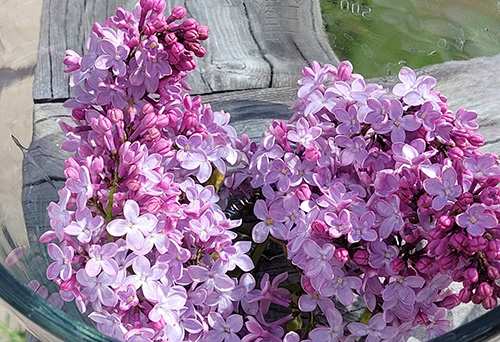
Step 3: Next, the small tubular four-petaled flowers need to be removed from the woody branch ends. This may be a time-consuming project. The flowers are surprisingly durable and pluck easily from their tiny sheaths. It smells unbelievably floral. Some folks may want to do this outdoors or with a window open as the scent can become a little heady.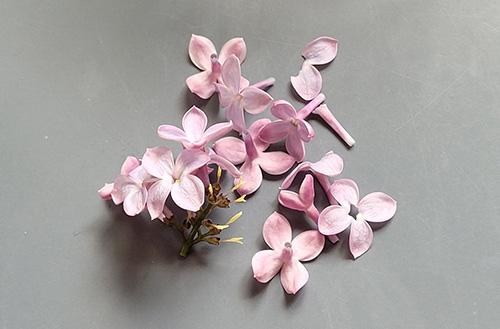
Step 4: Collect the flowers in a clean container. Fill with flowers to ¾ full. It is surprising how quickly they accumulate. A fun task with kids or over a bottle of wine or a cup of tea with some friends.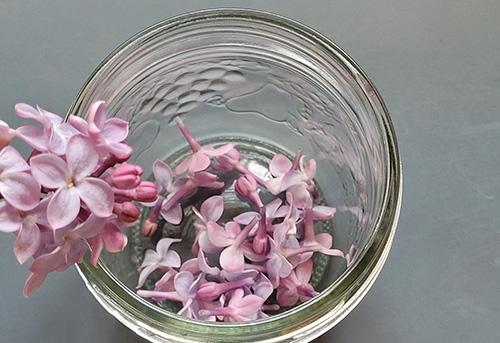
Step 5: If you somehow have too many lilac flowers there are a plethora of other things to make with them. The remaining flowers might simply go in a vase to extend their prettiness and scent. Flowers dry beautifully also. They will retain their delicious aroma and their color is deepened when dried. Extra flowers might also be a lovely addition to an oil infusion. The subsequent infused oil can be used to perfume bath and body products as well as salves and skincare creations.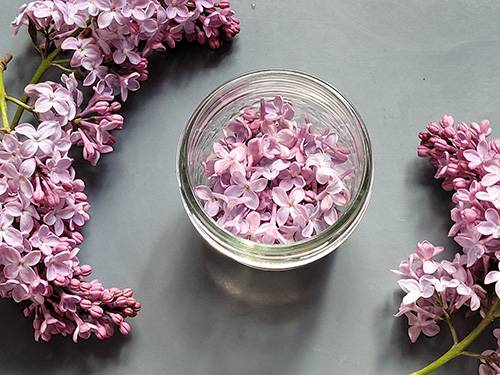
Step 6: Drizzle honey over the lilac flowers. Leaving a bit of room at the top as the flowers will slowly float to the top. 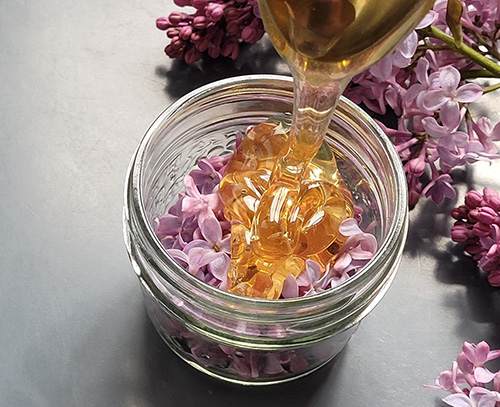
Allow the honey to infuse with the lilac’s lovely floral scents for 2 to 6 weeks.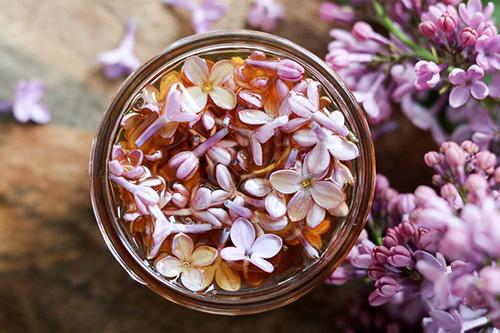
Cautions: As lilac is nontoxic, there are few edibility concerns aside from any potential allergic reaction. This pertains to ingesting honey as well, particularly for those who do not commonly have it in their diet.
How to use it:
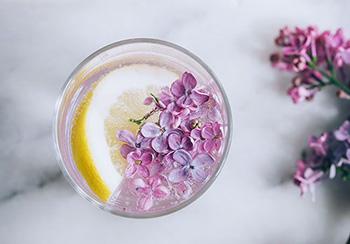
Using lilac honey seems to be something reserved for a special occasion. We have a big birthday coming up soon. I’m thinking about baking a lilac-flavored cheesecake drizzled with this fantastic lilac-infused honey. Secretly, I did also dry lilac flowers for this potential baking opportunity.
Other uses for lilac-infused honey could be as an ingredient in floral-inspired cocktails. Simply, the wonderfully sweet and delicious lilac-infused honey might be used to sweeten beverages such as herbal tea. Also, a great addition to herbal iced tea as well.
The lilac-infused honey would be a memorable addition as a drizzle on ice cream, pastries, or summer fruit.
There is not a specific dose for this recipe. Overindulgence is sometimes acceptable in times of celebration. As always, listen to your body and be wary of any adverse reactions to new foods.
You may also like:
Homemade Fermented Honey Garlic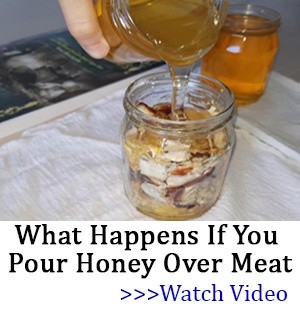
The Plant That Is Sweeter Than Sugar And Helps People With Diabetes (Video)
50 Amazing Uses For Honey You Didn’t Know About
How to Make an Immunity Boosting Shot with Celery, Spinach, Ginger, Lemon, and Manuka Honey
How to Infuse Honey with Elderberry
If you liked our article don’t forget to pin it!
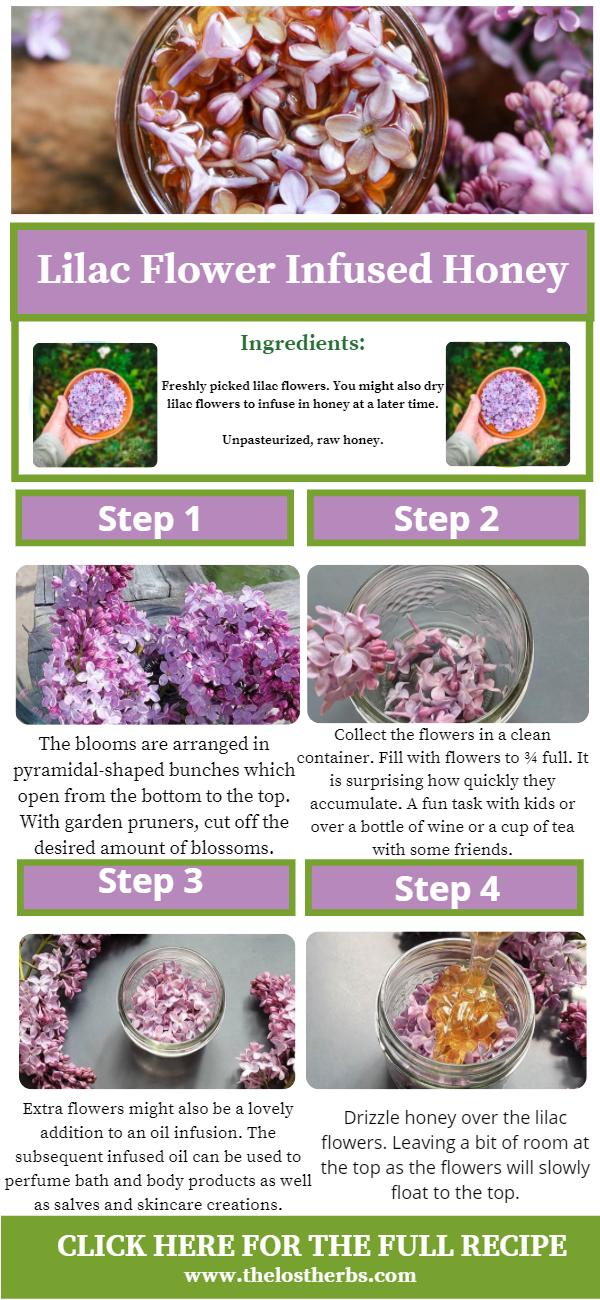

do we filter out the flowers after infusion process?
Hi Per E,
The flowers are edible. But depends on how you want to use the honey.
If you just want to sweeten beverages such as herbal tea then yes, you can filter out the flowers.
And then later, you can use the flowers for other recipes. Toss a few into salads or use them for baking or to decorate your desserts. (Lilac Cookies, Lilac Cheesecake, Ice cream etc.. )
Many blessings!
Is it possible to grow lilacs in zone 9? Perhaps in a sheltered location?
Hi Joni,
The common lilac prefers USDA growing zones 3 through 7.
However, with some effort and proper care, you may grow it in zone 9 as well. You can look beyond the classic lilacs to the newer cultivars. Some have been bred to grow in warmer zones.
Plant your lilac in an area that gets at least six hours of full sun each day. As far as soil, lilacs require moist, fertile, well-drained soil and regular irrigation in dry periods. If you need to prune the lilac, do so right after the plant’s spring blooms fade.
Many blessings!
Do you cover the jar to let the lilac infuse in the honey for the 2- 6 weeks? Or leave uncovered?
Hi Betsy,
Once you covered the flowers with honey, let it settle down into the jar for a bit.
Then, cap the jar and let the honey infuse for at least a few days and up to several weeks before using, stirring the flowers up a bit as often as you remember 🙂
Many blessings!
I’m thinking a lilac mead would be quite tasty. We’ll try a batch next year!
Hi Dennis,
Thank you for your continued support.
The Lilac Mead Recipe is also a delicious way to preserve the amazing flavor of Lilacs and enjoy it throughout the year.
Many blessings!
amazing I had no idea that this was something to consider. we have several lilac trees and I will try this this next spring. very interesting.
Hi Wayne,
Thank you for your comment.
We are glad to hear that you have several lilac trees. Definitely an easy and tasty recipe to try.
Many blessings!
tones down my anxiety by a mile! great recipes! thank you!
This is great and can’t wait to try it out. Thank you.
Hi Olga,
Thank you for your continued support.
We are glad to hear that you liked our recipe.
Many blessings!